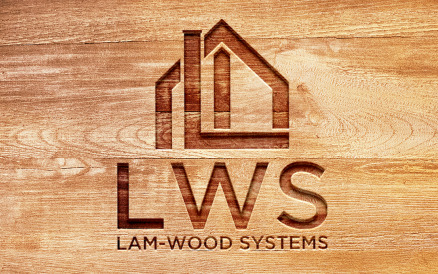In this new article series, "SkyCiv Insights", SkyCiv will be conversing with engineers, managers, leaders, activists, researchers...(you get the picture) within the structural engineering and construction industries as a way to share knowledge among the community.
For the inaugural piece, we interviewed Jeremy Crandall, COO of Lam-Wood Systems based out of Denver, Colorado. He gave us some background information on his position and what Lam-Wood systems does, after which we dive into some questions about the Mass Timber and wood design within the structural engineering and construction industry as a whole.


Jeremy Crandall
COO of Lam-Wood Systems
Jeremy is the Chief Operating Officer of Lam-Wood Systems, Inc. – a structural wood supplier focused on commercial, multi-family and high-end custom residential projects across the US for more than 40 years. LWS combines mill-direct delivery from engineered wood manufacturers with technical expertise to provide project-based solutions to benefit designers, contractors, and installers with a coordinated package of high-quality products.
Learn more about Lam-Wood Systems at lamwood.com
Tell us about yourself.
Q: What is your current role at Lam-Wood Systems, and what does your work entail?
A: As Chief Operating Officer, I oversee the operations, process implementation and staffing. One of the many tasks in the operations category is overseeing the day-to-day activities to ensure we are delivering a high-quality product on time. I challenge the “why” and “how” of the project life cycle through our office with the end goal of answering the question, what can we do to make it better and more efficient for the end user? Along with this, I complete take-offs for material on potential projects, assist design teams through their drawing production, and I still get to do one of the passions that brought me to Lam-Wood, Manage projects.
Q: What brought you into the position you currently hold? How did you get into the wood industry in the first place?
A: The attributes that brought me to the position I currently hold were, leadership skills, work ethic, process oriented, persistence, tenacity, and attention to detail. My move into the wood industry occurred because I believed with the Mass Timber movement there was going to be new opportunities and challenges. In 2017, I came to LWS as a Senior Project Manager to assist in progressing the Mass Timber movement. Prior to this, I was a Project Manager and Partner at a Denver based structural engineering firm. One of the things that excited me the most was the opportunity to be on the front end of the Mass Timber movement here in the US.

Project from LWS, a hybrid of concrete and timer working together
What about the Mass Timber and Engineered Wood Industry?
Q: In your opinion as a wood material advocate, how has the overall sentiment of wood as a building material changed in the last 5 years?
A: In the US market, the Mass Timber movement has propelled the industry to challenge the prior thoughts of where wood fit in the construction industry. There has been significant analysis completed, tests performed and code committees reviewing, voting, and adapting the codes for designers to be able to specify newer wood products more confidently. This has resulted in these products being specified more frequently.
Q: For those unaware of what “engineered wood” is, could you give a quick explanation?
A: Engineered wood gets its name from taking wood fiber and gluing or laminating it together to create larger structural sections from smaller wood fiber elements. This allows for smaller trees to be used while providing the larger laminated sections that the design requires. Examples of this would be I-joists, LVL, LSL, PSL, OSB, Glulam members, just to name a few.
Q: What about "mass timber"?
A: Mass timber is similar in nature as far as the sections are still manly comprised of sections that are glued or laminated together, however this new term encompasses larger format decking options. Some examples of this would be glulam members, Cross Laminated Timber (CLT), Mass Plywood Panels (MPP), Dowel Laminated Timber (DLT), Glue Laminated Timber (GLT) and Nail Laminated Timber (NLT). While most of these are new to North America, many of these products have been used in projects around the world for decades.
What are the pros and cons of wood?
Q: In comparison to other common building materials, what are some benefits of engineered wood construction?
- Mass timber can provide an exposed structure that is warm and inviting.
- Timber sequesters carbon and is a renewable & sustainable resource.
- Wood structures are lighter than their steel and concrete counterparts, which reduces the overall demand on the foundations and seismic lateral system.
- Ease of install. New installers can be installing at close to industry standard pace very quickly due to the level of prefabrication and shop-precision available.
Q: What are some negatives?
- No “R-Value” for seismic design is currently in the code for mass timber panels used as a diaphragm or shear wall.
- Perception that it costs more to build out of wood.
- Lack of knowledge of Mass Timber.
- Current lack of representation and instruction at the University level.
Q: What would be the best-case scenario for the engineered wood industry in the near future, what are you doing currently to perpetuate that, and what should people be doing?
A: More construction projects utilizing Mass Timber will increase the exposure and get more people thinking of it early in the design process. Educating the design community and owners of the benefits of wood over other building materials. We currently offer Lunch and Learn sessions, team round table meetings and individual discussions/workshop sessions.
Q: If I were a structural engineer with elementary knowledge on wood design, how would I go about educating myself on the subject to the point where I can comfortably design using engineered wood/mass timber products?
A: There are great resources with respect to the wood industry that are readily available for download. WoodWorks is focused on the use of wood in the construction industry and they have engineers on staff to assist in design questions. Lam-Wood is a great resource as we have practicing structural engineers on staff to assist design teams, contractors, and owners on how to use wood structural systems efficiently and economically.


